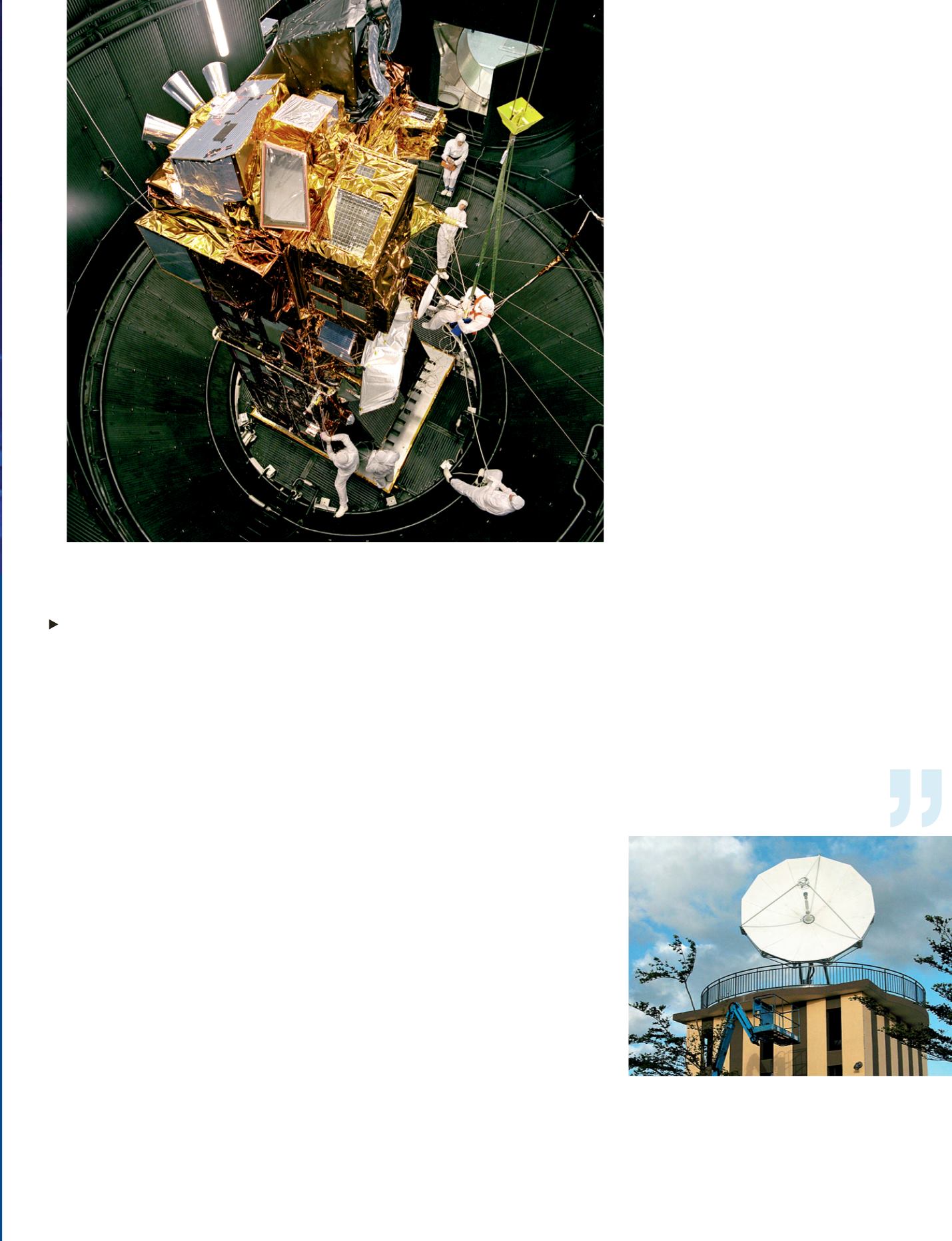
Seas - 85
i
SEAS-OI antenna being installed (November
2011). The
Surveillance de l’Environnement Assistée
par Satellite dans l’Océan Indien
remote sensing
project involves IRD, the Regional Council and
Université de La Réunion.
© J.P. Caminade, IGR, IRD-Réunion
They are primarily supported by the
European Union through the Cotonou
Convention which is the European Union
Agreement with the African, Caribbean
and Pacific group of states (ACP). The
EU channels a lot of regional initiatives
through the IOC; for example, we had a
tuna tagging project in the West Indian
Ocean to look at their migratory patterns
in order to determine sustainable
fisheries.
We have had a very long—to be completed
at the end of 2011—EU-funded coastal
zone management project called
RECOMA. The aim is to develop a protocol
for the management and protection of
the coastal zone of eastern Africa. There
were a series of demonstration sites set
up, an extensive educational programme
and also a training programme in all
the countries.The other platform is the
Nairobi convention (IOC is a member
of the Nairobi Convention). Through
that also, a number of regional projects
funded by the Global Environment
Facility (GEF) have been implemented
at the regional level to look at sources
of pollution, marine debris and trans-
boundary issues when it comes to
migratory species and other organisms.
The Global Ocean Observing System
(GOOS) is a UNESCO initiative. They
coordinate ocean-observing activities,
and we do have sometimes research
vessels and monitoring vessels here
in the Indian Ocean. GOOS funded the
project called “WIO-Lab” West Indian
Ocean land sources of pollution.
One of the biggest projects we had in
a region was the Angola and Somalia
Current Ecosystem Project. The vessels
undertook research and collected marine
biotype in order to determine the status
of the marine environment.
What are the main challenges you face?
The first is capacity, the capacity of the
people, adequate training. The second
is awareness at all levels. There is a
lot more now than before, particularly
among young people. Schools train the
teachers so that they can have a very
integrated approach to management and
introduce sustainability principles. Right
now at the university we are developing
a professional course in sustainable
development and management and
also specific modules of sustainable
development.
The third issue is enforcement and
management and planning. As a result
of lack of capacity and knowledge, you
end up with poor planning, no land use
plan, no development plan which allows
development to proceed in a desultory
manner or stimulates conflicts between
different activities like fisheries and
tourism. So proper planning and proper
investment in waste management, in
pollution control, are all some of the
critical challenges.
What are the concrete risks in fact?
It is of course climate change, which
is an external cause, but we have had
significant coral bleaching in the region,
and that has an impact on fisheries as
well as on diving industries. Sea level
rising and extreme weather events have
an impact on beaches, on the coastlines,
and damage corals and built up areas.
The impression of people who live on
the coast is that it is for the holidays and
they forget about the actual challenges
happening there. In fact, the coastal
zone will remain one of the most
significant hot spots in the planet in
the next decade or millennia. And more
and more people will want to live on the
coast and there will be a lot of pressure
and of changes along the coast. People
will make investments and all sorts of
developments to deal with the issue of
climate change.
The impact of pollution as well will be
important. As we see in the case of Japan
with the tsunami, the destruction caused
by extreme events can have a significant
impact for people who live on the
coast. And I think the coastlines are not
adequately addressed and represented
even at the political level because people
are more concerned with city and urban
issues or mainland issues than with what
is happening on the coast.
c
i
Envisat in ESA ESTEC centre. Launched in 2001, this Earth observing satellite vastly improved the
range and accuracy of scientific measurements of the atmosphere, oceans, land surface and ice.
© ESA/A.Van Der Geest


